Vietnam part 2: Hue and Hoi An

Meikyo
Phil and Sarah Tadd
Fri 19 Apr 2024 09:22
| The overnight sleeper train (noisy and rattling, but otherwise not a bad experience) delivered us to Hue at around 9.30 am and we were taken to our hotel to freshen up and meet up with the members of our tour group who had chosen to fly rather than taking the train before the day’s sightseeing. Hue was the imperial capital of Vietnam from 1802 to 1945 under the 13 emperors of the Nguyen dynasty, and under French occupation, before being moved to Saigon (now Ho Chi Minh City) when the last emperor abdicated and passed power to the Viet Minh. It is a UNESCO World Heritage site. We spent the day touring imperial sites including the impressive Citadel complex which is where the emperors lived as well as being the administrative centre and a site where the Nguyen emperors are worshipped.  The imposing outer wall to the citadel 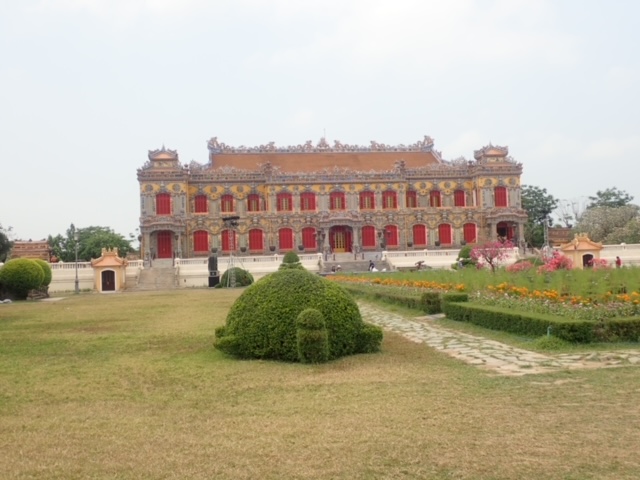 One of the palace buildings  Temple for the worship of Nine Nguyen Lords. This is where the emperors are worshipped, not their burial site. 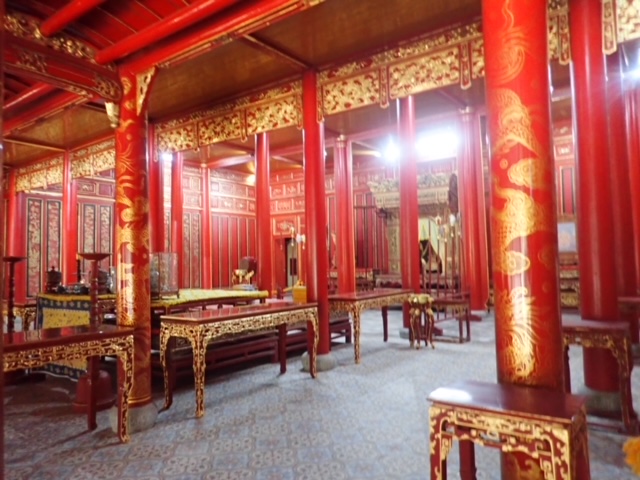 Inside the temple 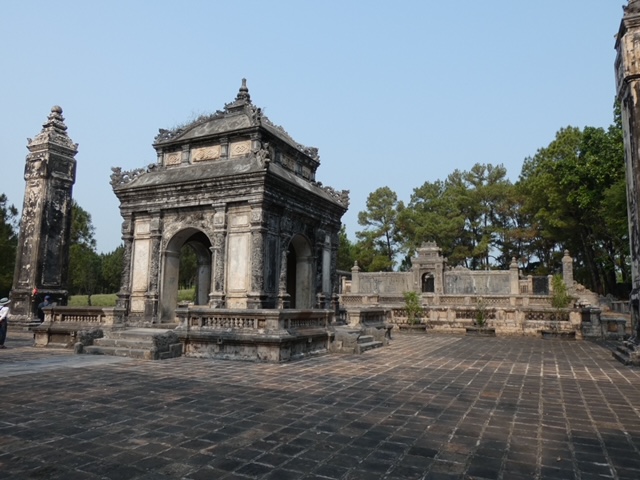 The tomb of emperor Dong Khanh It was interesting to see this element of the country’s history alongside the colonial, war and communist aspects. The area around Hue was affected by the Tet offensive and walls in the historic palace still show signs of bullet and bomb damage. We finished the day with a boat ride on the river back to our hotel, and an evening stroll along the waterfront. The following morning we were driven to Hoi An via the road of the Ocean Clouds, with it zigzags and sea views - hazy as were all the views we had in Vietnam - and the China Beach, which apparently featured in Apocolypse Now. Our bus for this part of the trip was a karaoke bus - all blue glitter and flashing lights on the ceiling. Luckily we weren’t expected to perform. In Hoi An we had a walking tour of the Ancient Town, before being left alone to shop. The Ancient town, is a beautiful area beside the river, and another World Heritage site, but very touristy. Most of the old buildings are used as shops and you have to look past their wares to see their beauty, but there are still some places where you can see them and their original interiors. The city is known for its tailors, and one had set itself up to cater for tourists with very fast turnaround times, so Sarah had a traditional Vietnamese Ao Dai made up, while Phil opted for sunglasses from the neighbouring Optometrist. We had another excellent meal with some of the group, before an early night. We didn’t have a bad meal in Vietnam, even when choosing a place at random, everything was fresh and tasty using a lot of fresh produce and flavoured with herbs and spices. 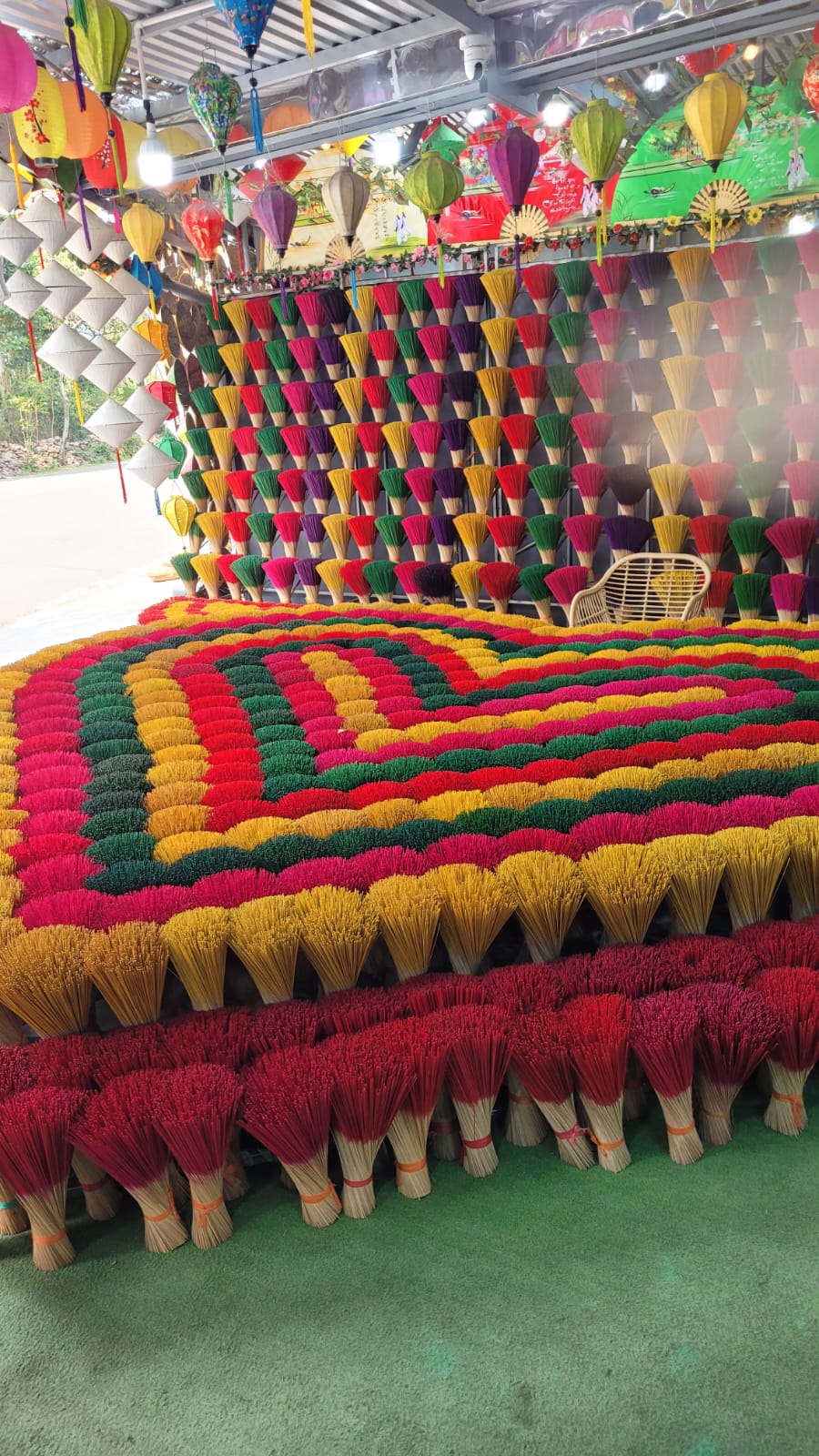 On the way to Hoi An we stopped at a village where they make incense sticks by hand 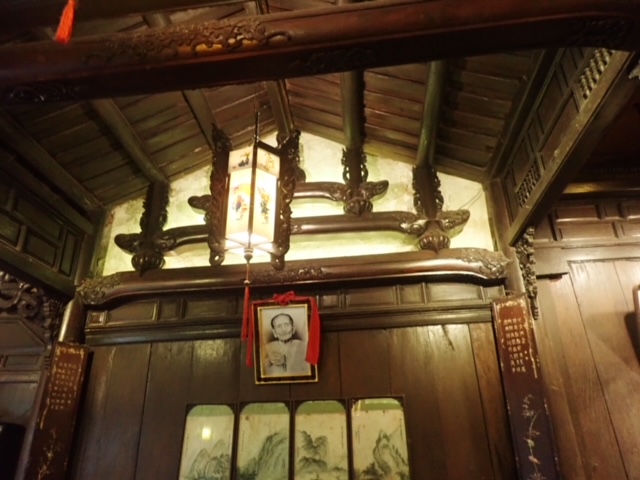 Inside a 200 year old former merchant’s house in Hoi An 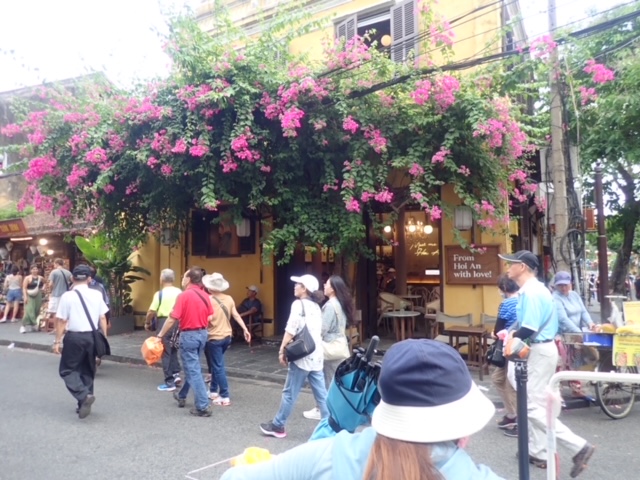 Hoi An’s ancient town The tour company we travelled with is called On The Go Tours and this turned out to be very apt as we seemed to be on the go all the time, but we stopped in Hoi An for 3 nights. On the second day we had a cycle tour from our hotel around the paddy fields. The rice was beginning to be harvested and was set out on the footpaths to dry and in places we had no choice but to cycle through it. Later we realised that every flat space was used to dry the produce including the tarmac at junctions on major roads. Makes you wonder about how you prepare your rice for cooking. During the cycle tour we visited a market garden where we were shown how they grow using fairly traditional methods and were given a cookery lesson, the results of which we ate for our lunch. 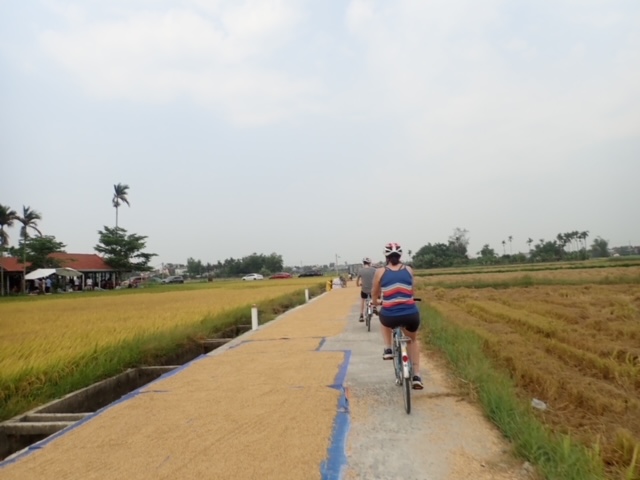 Cycling through the rice paddies with rice set out to dry 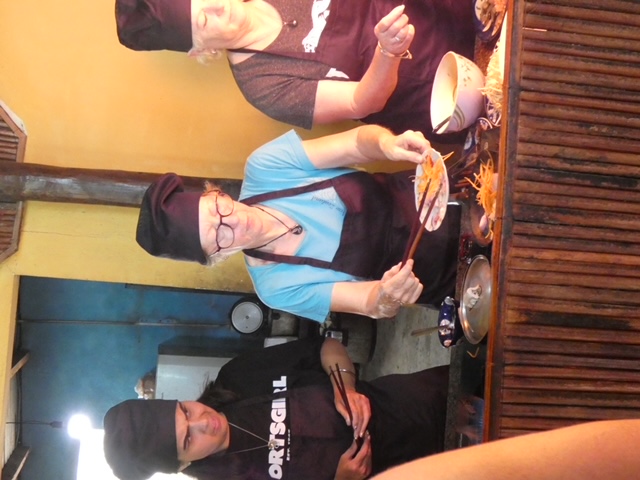 Sarah makes a Vietnamese pancake for her lunch 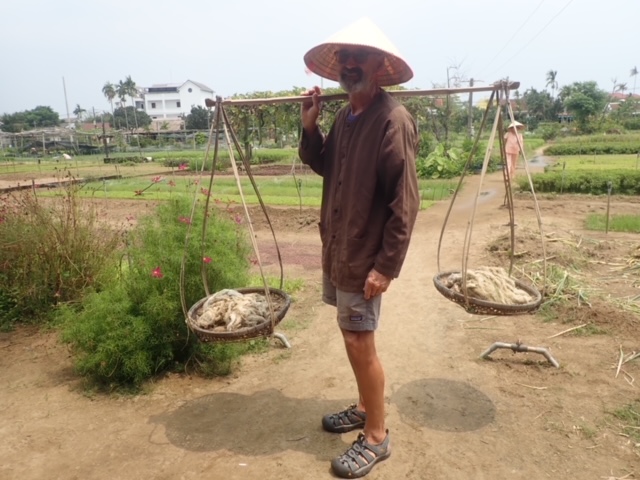 Phil as a peasant farmer That evening the adventurous souls in the group got up close to the traffic of Hoi An on a ‘Street Eats’ tour with Vespa Adventures. Nine of us climbed on to the back seats of vintage Vespas and were taken through the crazy Vietnamese traffic to a series of places where local specialities were served and where the locals ate. After starting with cocktails we had snacks by the river, followed by cup cakes (a bit like mini quiches) and then White Rose dumplings. By that time we were full so asked for ice-cream to finish. Sarah’s driver seemed determined that his place was second in line behind the lead bike and would stop at nothing to be sure he got there. Taking time for photos meant getting left behind and a hair raising ride to catch up again. Hoi An by night was lively, noisy and colourful and in the middle of our tour we had a lantern lit boat ride on the river with hundreds of other tourists! With only one really near miss (involving what appeared to be a drunk cyclist) we were returned safely to our hotel after a great night out. 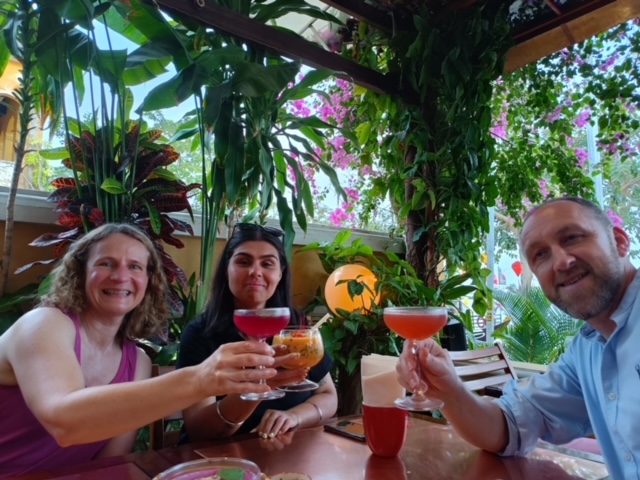 Cocktails to start 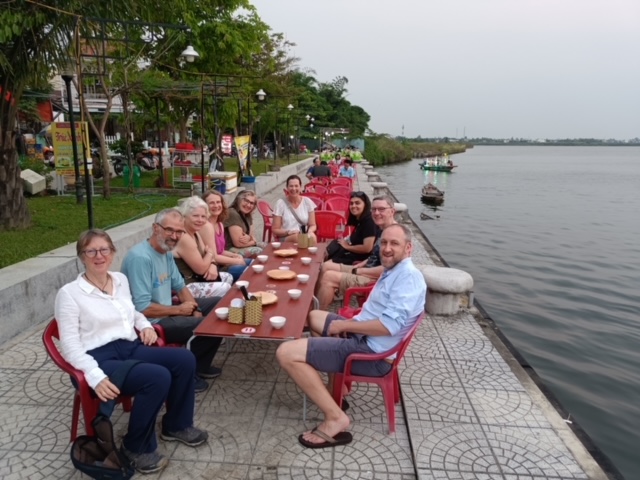 Starters by the river. All the street vendors used small plastic chairs and tables. Easier to clear away, particularly for illegal vendors!  Cupcakes 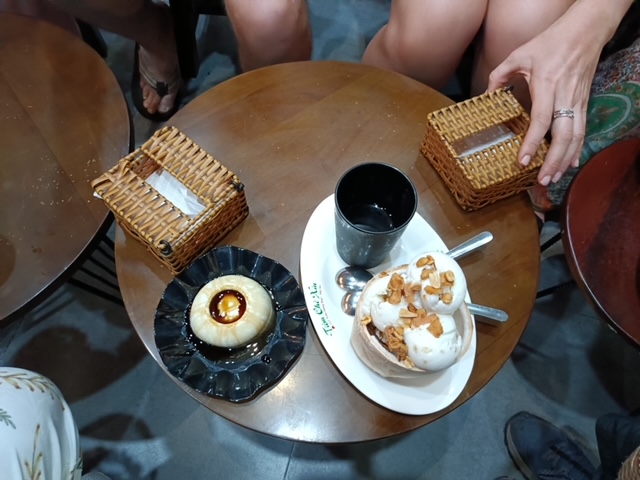 Coconut icecream served in a coconut shell Our last day in Hoi A was a free day but most of us opted to take a tour to the Golden Hand bridge. It involved a cable car ride up to the bridge in the Ba Na Hills and then a further cable car to an old French hill station where the wealthy colonials had built castles on the hill top. It had been turned into a bit of a theme park and was probably the low light of our Vietnam experience but we quite liked the spiritual area at the top of the hill where it was relatively peaceful and with view across the old hill station. 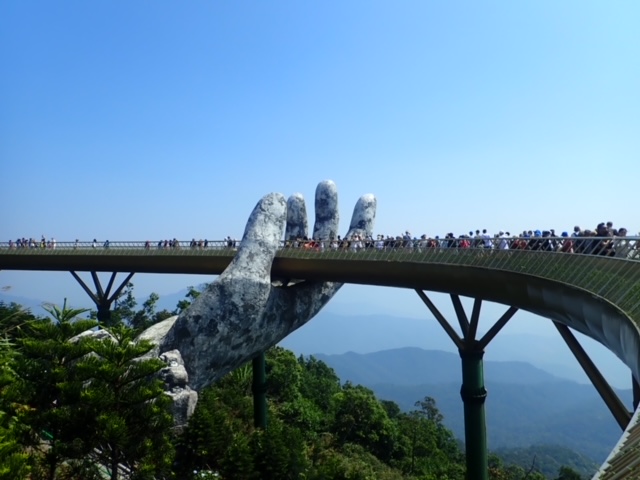 The Golden Hand Bridge 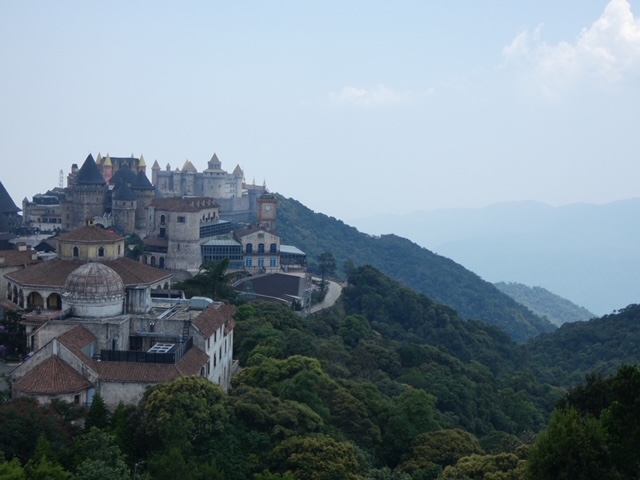 French castles of Ba Na hill station |